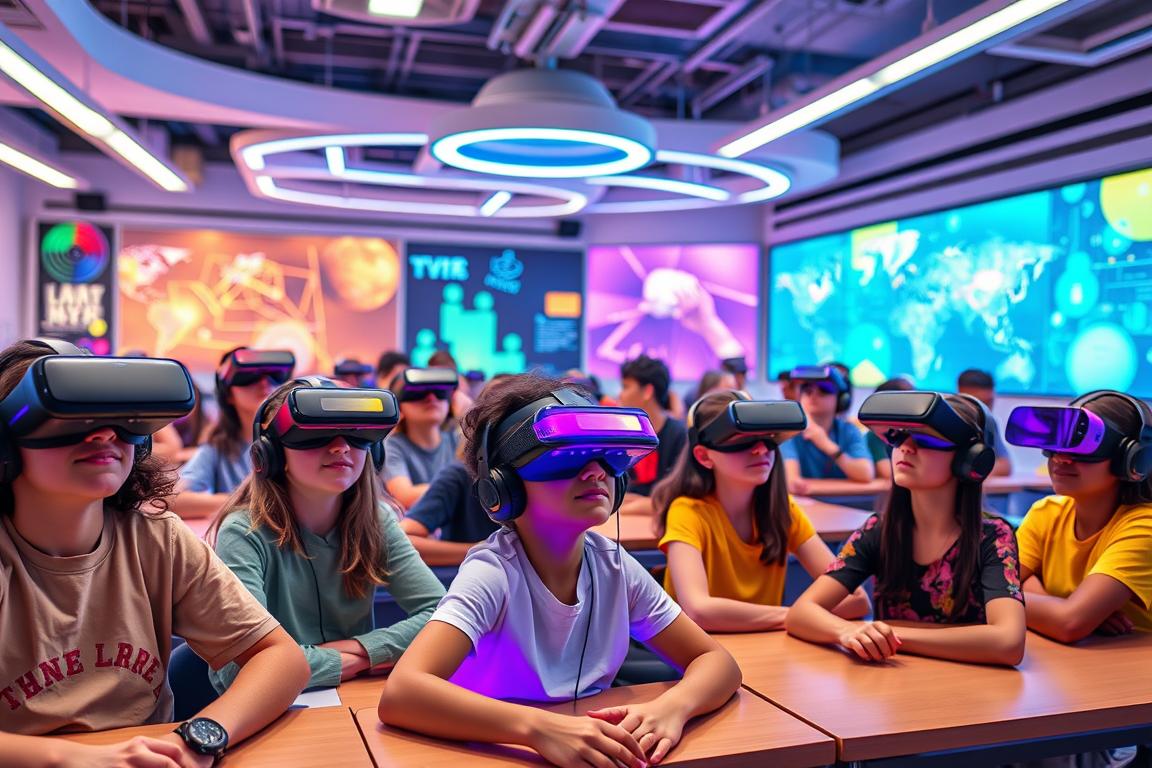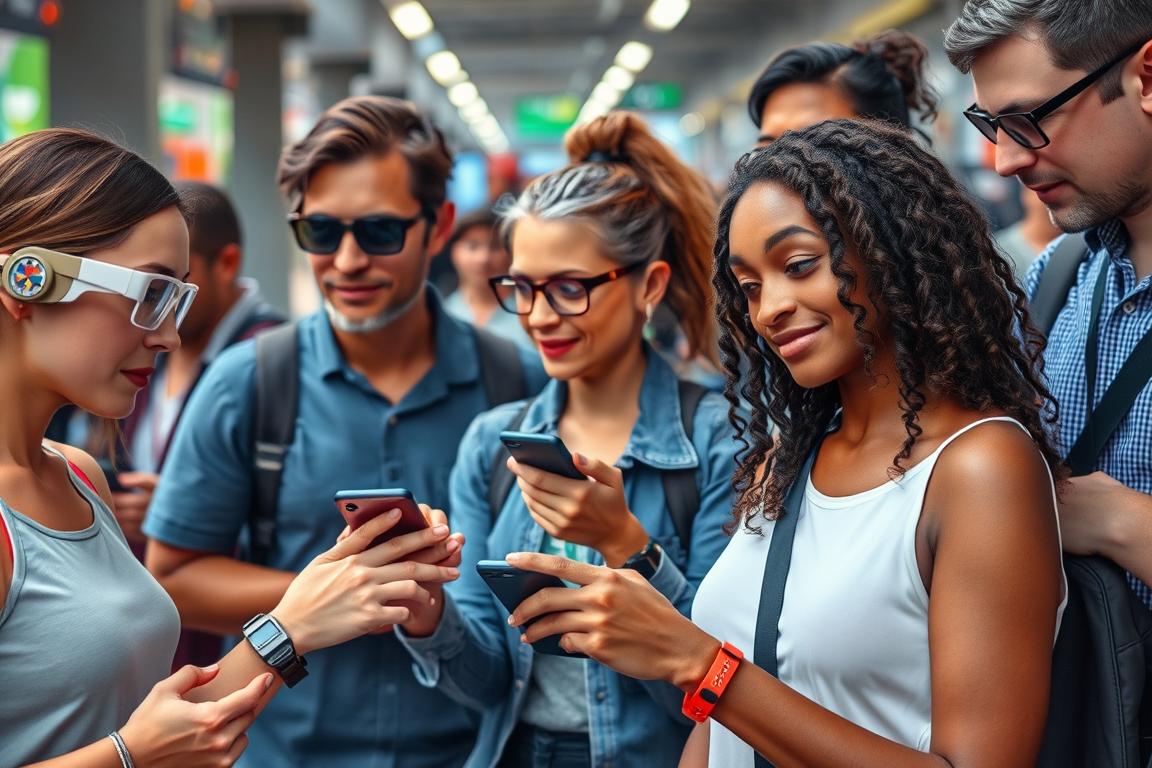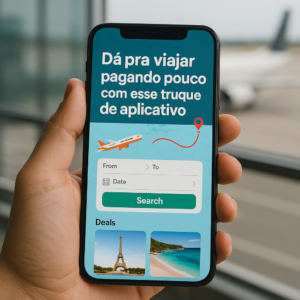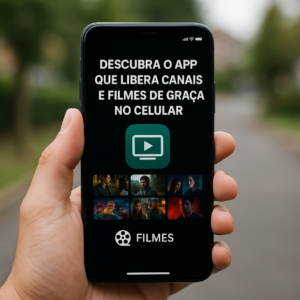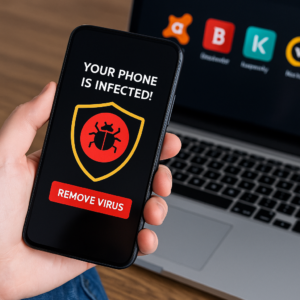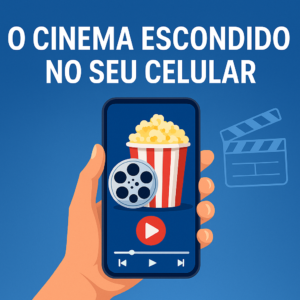Augmented Reality (AR) and Virtual Reality (VR): Inclusive Technologies
Almost 151,000 people worldwide have some kind of disability. This shows the importance of inclusive technologies such as augmented reality for accessibility. They help ensure equal opportunities for all.
Virtual Reality (VR) and Augmented Reality (AR) are changing education. They allow students of all abilities to access interactive resources. For example, 3D models make learning more concrete and engaging.
With Augmented and Virtual Reality, remote schools can take students to museums and laboratories virtually. This extends education without the need to physically move. Additionally, AR applications help people with visual or hearing impairments. They improve their autonomy and quality of life.
Augmented and virtual reality have the power to change how we interact with the world. They open doors to previously impossible experiences and promote inclusion in many areas. With the increased use of assistive technologies, digital accessibility is becoming more common.
The Transformative Power of Augmented Reality (AR) and Virtual Reality (VR) for Inclusion
Virtual Reality (VR) and Augmented Reality (AR) are changing the way we see social inclusion and the inclusive education. They create environments that engage and interact with the user. This helps people with disabilities do things that were previously impossible.
Studies show that VR and AR increase people’s motivation. They also encourage interaction and active participation. This helps VR social inclusion and the RA inclusive education to grow.
- Promote student interaction and active participation
- Increase user motivation
- Enabling people with disabilities to perform tasks that would otherwise not be possible
In short, VR and AR are changing the way we promote social inclusion and the inclusive education. They provide the opportunity for people with disabilities to participate more actively and independently.
Assistive Technologies with AR and VR
Augmented and virtual reality are changing education. They use AR and VR technologies to help. Studies show that virtual reality can improve knowledge retention by up to 75%.
Assistive technologies are very important for inclusion. They help people with disabilities. AI can make the most effective interventions in 30%.
One example is Proloquo2Go, an app that improves communication in 80% cases. Brain Power, a startup, uses augmented reality to improve social skills in 60% users.
Below, we present a table with some examples of assistive technologies and their applications:
| Technology | Application |
|---|---|
| Augmented Reality | Helps develop social and cognitive skills |
| Virtual Reality | Helps increase knowledge retention and develop skills in simulated environments |
| Communication Applications | Helps improve communication in users with verbalization difficulties |
In short, AR and VR technology is essential for inclusive education. It improves the lives of people with disabilities. It is important to invest in research so that everyone has access to quality education.
Practical Applications in Special Education
Augmented and virtual reality are being used more in special education. They bring benefits to those with disabilities. Studies show that virtual and augmented reality improve attention and learning by up to 60%.
These technologies also reduce cognitive load. This helps students learn more efficiently. This is especially useful for students with special needs, who benefit from a more interactive experience.
Tools for Different Educational Needs
Various tools and technologies meet educational needs. Some of them are:
- Virtual reality for simulations and immersive experiences
- Augmented reality for interactions and educational games
- VR headsets and controllers for a more immersive experience
Success Stories in Brazilian Schools
In Brazilian schools, augmented and virtual reality have shown positive results. For example, a school in São Paulo used virtual reality. It created an immersive experience for visually impaired students. This allowed them to explore and interact with their surroundings more effectively.
Implementation Methodologies
To use augmented and virtual reality in special education, it is essential to follow a well-structured methodology. This involves:
- Assess students' educational needs
- Select the most appropriate tools and technologies
- Develop an implementation and training plan for teachers
When implemented correctly, augmented and virtual reality can bring significant benefits. They improve learning and inclusion for students with disabilities.
Benefits of AR and VR for People with Disabilities
THE inclusive virtual reality and the RA digital inclusion are powerful tools. They help to provide greater inclusion and access for people with disabilities. Studies show that more people want games and leisure activities that include people with physical disabilities.
The main advantages are:
- Increasing accessibility and inclusion for people with disabilities
- Improving the learning and leisure experience
- Development of social and communication skills
- Increased self-esteem and confidence
THE inclusive virtual reality and the RA digital inclusion are used in a variety of settings. These include education, rehabilitation, and leisure. For example, a game developed with Microsoft Kinect technology helps wheelchair users recover. It shows how inclusive virtual reality can improve the lives of many.
In conclusion, the inclusive virtual reality and the RA digital inclusion can change the lives of people with disabilities. They promote inclusion, accessibility and equal opportunities.
Innovative Solutions for Hearing Impairment
Augmented reality and VR social inclusion are changing the lives of people with hearing impairments. They can now interact with the world more easily. This is thanks to assistive technologies that promote inclusion and accessibility.
Some examples of innovative solutions include:
- Real-time translation applications that enable people with hearing impairments to communicate more effectively.
- Virtual environments for learning Libras, which offer an opportunity for people with hearing impairments to learn and practice sign language.
These solutions aim to improve the lives of people with hearing impairments. They seek to promote social inclusion and accessibility through augmented reality.
Studies show that AI can increase the effectiveness of assistive technologies by up to 40%. This helps them better adapt to the needs of users. Additionally, the use of alternative communication software, such as mobile apps, has grown by 25% in the last two years. This helps to include students with speech difficulties.
| Technology | Benefit |
|---|---|
| Augmented Reality | Improves accessibility and inclusion |
| Virtual Reality | Provides virtual environments for learning and practice |
Mobility and Independence through Immersive Technology
AR and VR technology is changing how people with disabilities see the world. It uses augmented and virtual reality to help with inclusion in schools. This improves their mobility and independence.
Studies show that virtual reality helps develop motor and cognitive skills. It also improves social skills in students with special needs. Augmented reality makes abstract concepts easier for these students to understand.
The advantages of immersive technology are many:
- Promotes autonomy and independence for people with disabilities
- Develops motor and cognitive skills
- Facilitates the understanding of abstract concepts
- Promotes social inclusion
One example is the use of virtual reality glasses. They simulate everyday situations. This helps people with disabilities prepare for real life.
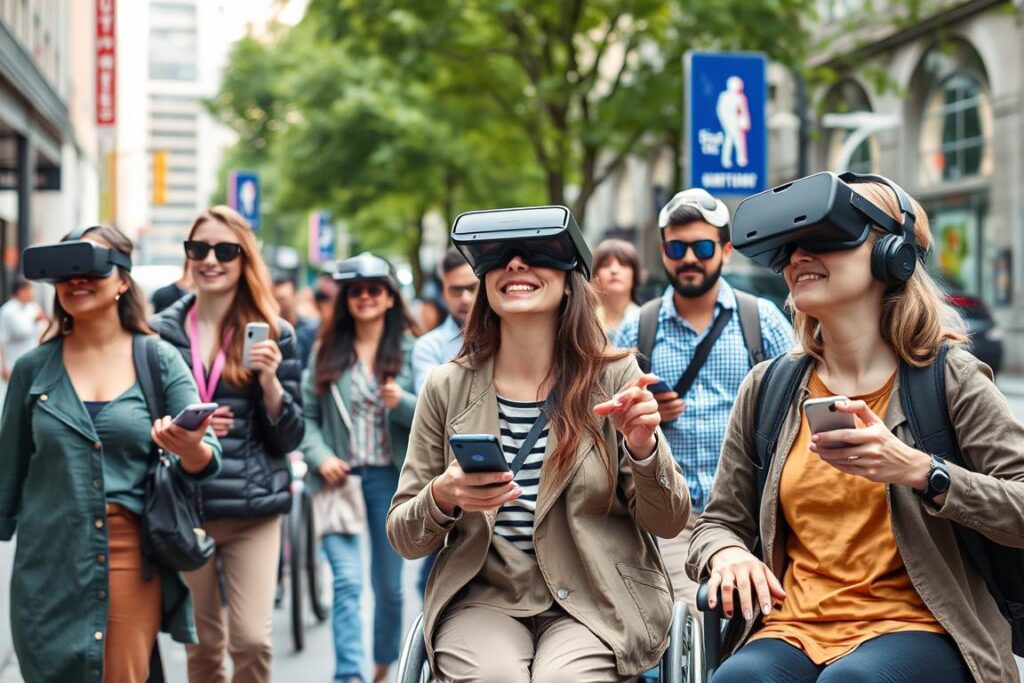
AR and VR technology is very important for mobility and independence. We must continue to develop and use these technologies so that everyone has access to the same opportunities.
| Technology | Advantages |
|---|---|
| Augmented Reality | Facilitate the understanding of abstract concepts |
| Virtual Reality | Develop motor and cognitive skills |
Social Skills Development with VR
Virtual reality (VR) is an innovative tool for improving social skills. This is especially true for those with disabilities. RA inclusive education and the inclusive virtual reality are essential for inclusion and accessibility.
Practicing everyday situations in VR is very helpful. It allows people to improve their skills in a safe environment. VR therapies are also effective in improving interaction with the world.
Simulations of Everyday Situations
VR simulations can be anything from shopping to conversation. They help develop skills like speaking well, understanding people, and problem-solving.
Virtual Reality Assisted Therapies
VR therapies help overcome social and emotional challenges. They are personalized for each person, which makes them very effective.
THE inclusive virtual reality It is very powerful for improving social skills. With it, it is possible to create a learning environment that serves each person uniquely.
| Advantages of VR | Benefits |
|---|---|
| Development of social skills | Improved ability to interact with the world around you |
| Simulations of everyday situations | Practice and improve skills in a safe and controlled environment |
| Virtual reality assisted therapies | Personalized treatment to overcome social and emotional challenges |
Digital Accessibility and Technological Inclusion
Augmented reality and VR are essential to include people with disabilities. Artificial Intelligence (AI) will integrate software and devices. This will create personalized accessibility experiences by 2024.
AR and VR technologies will become more common in accessible virtual environments. Universal web design will be a priority. Companies will invest more in inclusive design to serve a diverse audience.
Some of the trends for the future include:
- Mixed reality, which combines VR and AR
- Development of lighter accessories, such as AR glasses that resemble regular glasses
- Expectation that fully virtual work and learning environments will become a reality in the next 5 to 10 years, promoting greater inclusion and accessibility to technologies
The combination of VR, AR, and AI creates rich, personalized experiences. They are interactive and bring benefits such as process efficiency. They also improve the user experience in education and entertainment.
| Technology | Benefit |
|---|---|
| Augmented Reality (AR) | Interactive visualizations that can involve 100% of the environment |
| Virtual Reality (VR) | Laboratory simulations, entertainment through immersive games, and health with therapies and rehabilitation |
Challenges and Overcoming in Implementation
Adopt inclusive AR and VR technology in education can be a challenge. But it brings great opportunities to improve the way we learn. Studies show that Augmented and Virtual Reality can increase information retention by up to 75%.
The main challenges include the lack of training for teachers, the need to invest in infrastructure and the scarcity of resources. However, with partnerships and investment, it is possible to overcome these obstacles, thus creating a more inclusive and effective learning environment.
Some solutions to these challenges are:
- Ongoing training of educators to use technology effectively.
- Investments in infrastructure to equip schools with the necessary resources.
- Partnerships with companies and organizations to support projects.
THE inclusive AR and VR technology can be a powerful tool for improving education. With creative solutions and investment, we can overcome challenges. In this way, we create a brighter future for students.
With the inclusive AR and VR technology, schools can provide more personalized education. This increases information retention and improves student performance. Additionally, technology can help reduce school dropout rates and increase student motivation.
The Future of Immersive Technologies in Inclusion
Including people with disabilities is a huge challenge. But technologies like augmented reality (AR) and virtual reality (VR) can help a lot. They allow these people to participate in things they couldn’t before.
Studies show that AR and VR can greatly enhance learning. They also increase people’s motivation and engagement.
Trends and Innovations
Nowadays, more and more people with disabilities are using AR and VR. Partnerships between schools and technology companies are bringing new ideas and solutions.
Perspectives for Brazil
In Brazil, use AR and VR for people with disabilities is still a challenge. But with the help of schools and businesses, we can create new and accessible solutions for everyone.
In short, the future of immersive technologies in inclusion is very promising. With work and innovation, we can create a more accessible and inclusive world for everyone.
Training Professionals for Inclusive Technologies
It is essential to train professionals to use inclusive technologies. This helps to include more people in digital education. UNESCO says that Education 5.0 can change education to improve inclusion for all.
To do this, it is crucial to train teachers to use technologies such as virtual reality. It is also important to create educational materials that are accessible to everyone. The partnership of teachers, families, people with disabilities and technology experts is key to achieving equitable education.
There are challenges to be overcome:
- Equal access to technology
- Development of accessible digital educational materials
- Teacher training to use inclusive technologies
To overcome these challenges, it is necessary to invest in training professionals. Virtual reality and augmented reality can make education more accessible. They help include people with disabilities in digital education.
The table below shows how to use virtual and augmented reality to include more people in education:
| Technology | Application | Benefit |
|---|---|---|
| Virtual Reality | Creating immersive learning environments | Promotes digital inclusion and accessibility |
| Augmented Reality | Development of interactive teaching resources | Improves learning experience and information retention |
In conclusion, training professionals to use inclusive technologies is crucial. Virtual reality and augmented reality can make education more accessible. This helps to include people with disabilities in digital education.
Conclusion
We explore the benefits of augmented reality (AR) and virtual reality (VR) for social inclusion. These technologies can change how people with disabilities interact online. They improve mobility and independence, and help develop social skills.
In Brazil, moving towards a more inclusive society is essential. It is important that technology professionals and educational institutions work together. They must empower people with disabilities so that they can use these technologies.
The future of digital inclusion is promising. AR and VR are making a huge difference. They help break down barriers and create equal opportunities for everyone. It is our responsibility to ensure that technology benefits everyone, without exception.
